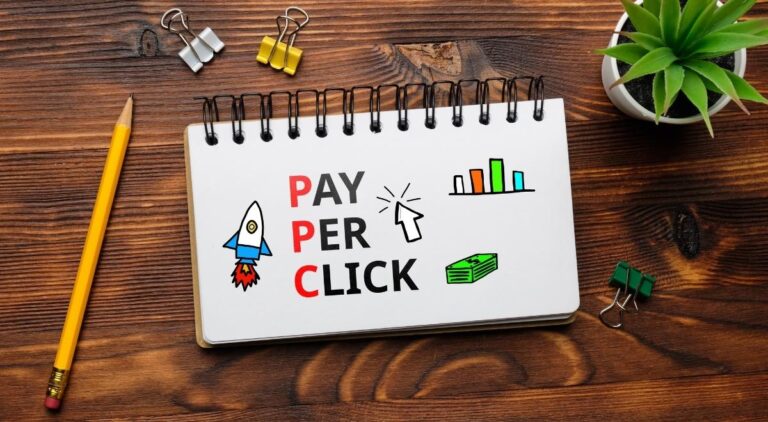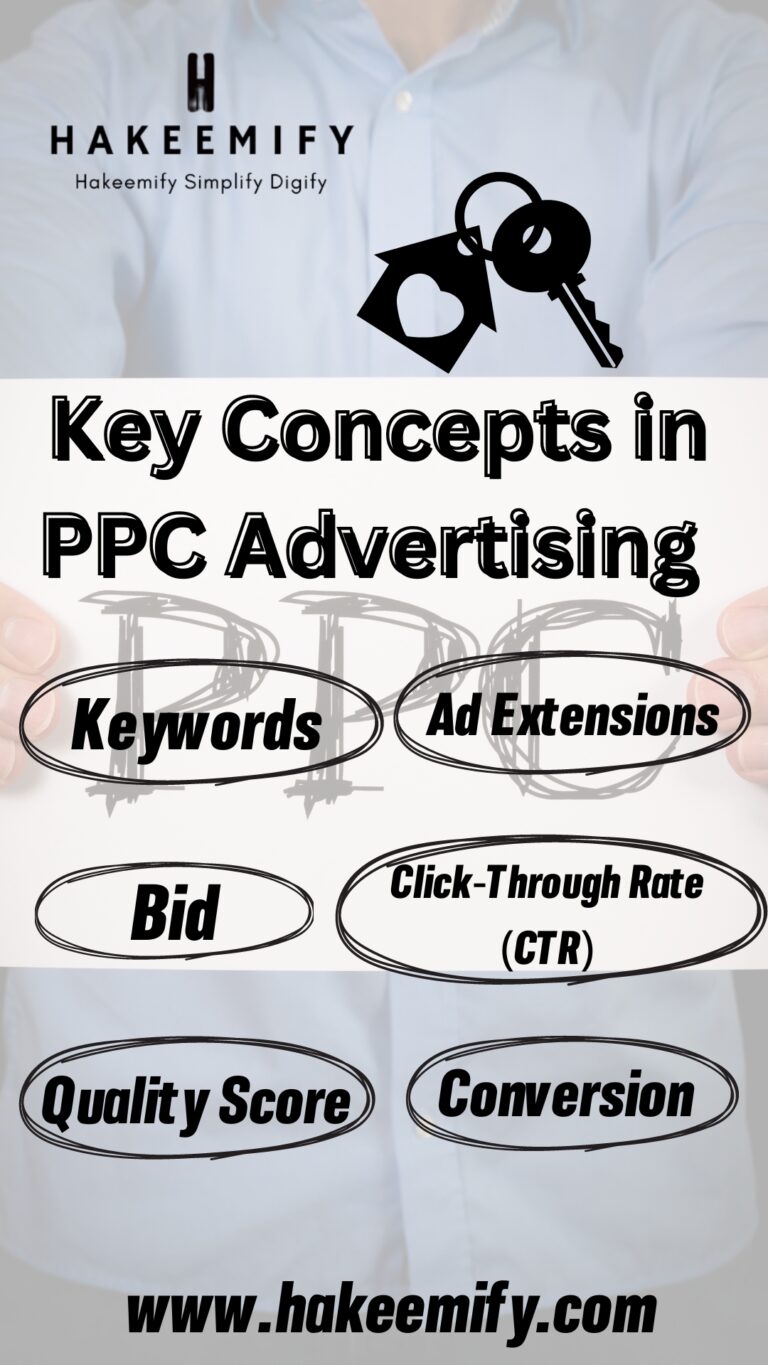Do You Know PPC Advertising Is The Best Way To Grow Your Business Better?
PPC advertising stands for “Pay-Per-Click” advertising. It is a digital marketing model in which advertisers pay a fee each time one of their ads is clicked. In other words, it’s a method of purchasing website visitors rather than making an effort to “earn” those visitors naturally. PPC advertising is commonly associated with search engines like Google, where advertisers bid on keywords relevant to their business. The advertiser’s ad may show up at the top or bottom of the search results page when a user searches for such terms. The term “pay-per-click” refers to the fee that the advertiser must pay if a user clicks on the advertisement.

What is PPC Advertising?
PPC stands for “Pay-Per-Click,” and PPC advertising is a digital marketing model where advertisers pay a fee each time one of their ads is clicked by a user. You can pay for website traffic, or you can work to earn it organically.
Advertisers place bids on precise keywords or phrases that are pertinent to their target market in PPC advertising campaigns. When users enter those keywords into search engines like Google or Bing, or when their online behavior matches the criteria set by advertisers, the ads are displayed on search engine results pages (SERPs) or other relevant digital platforms.

The placement of these ads is determined through an auction process, where factors like bid amount, ad quality, relevance, and other parameters are considered. When a user clicks on an ad, the advertiser is charged a predetermined fee, hence the term “pay-per-click.” The ultimate goal of PPC advertising is to drive traffic to a website and achieve specific business objectives, such as generating leads, making sales, or increasing brand visibility.
Understanding Pay-Per-Click (PPC) Advertising
PPC advertising is fundamentally a type of online advertising in which advertisers are charged a fee each time a user clicks on their ad. Search engines, social media sites, websites, and other digital channels may all display these advertisements. PPC advertising is provided by search engines like Google and Bing through programs like Google Ads and Bing Ads, and it is also offered by social media behemoths like Facebook, Instagram, and Twitter.

What is the pay-per-click PPC model?
In the Pay-Per-Click (PPC) model of internet advertising, businesses are charged a fee each time a user clicks one of their ads. Instead of seeking to earn those visits naturally, it is a means to purchase visits to a website. PPC is frequently utilized in social media advertising, search engine advertising, and a number of other online ad-displaying platforms.

The most common platform for PPC advertising is search engines, such as Google Ads (formerly Google AdWords) and Bing Ads. Here’s how the PPC model works:
- Ad Campaign Setup: Advertisers create ads that are relevant to specific keywords or phrases related to their products, services, or target audience. They also specify the maximum amount they are willing to pay for each click (this is known as the bid).
- Keyword Targeting: Advertisers select keywords or search terms that they want their ads to appear for. When a user enters a search query that matches the selected keywords, the ad may be displayed on the search engine results page (SERP).
- Ad Auction: When a user’s search query triggers an ad auction, the search engine’s algorithm determines which ads to show based on factors like bid amount, ad quality, relevance, and other performance metrics. It’s commonly known as “Ad Rank.”
- Ad Display: If the advertiser’s ad wins the auction, it is displayed prominently on the search results page, typically above or below the organic search results.
- Clicks and Charges: When a user clicks on the ad, the advertiser is charged the amount they bid for that keyword. The bid amount isn’t the only factor; ad quality and relevance also influence whether the ad is shown and its position.
- Ad Performance Monitoring: Advertisers monitor the performance of their ads using metrics like click-through rate (CTR), conversion rate, and return on ad spend (ROAS). They can better optimize their campaigns with the use of this data.
Key Concepts in PPC Advertising:

- Keywords: These are the terms or phrases that trigger the display of an ad when a user searches for them.
- Bid: The highest price a marketer is prepared to spend for a click on their advertisement. Better ad placement can result from more bids, but other elements, such as ad quality and relevance, also matter.
- Quality Score: A metric that search engines employ to judge the value and applicability of a landing page, keywords, and ads. A higher quality score could lead to more beneficial ad placement and lower costs.
- Ad Extensions: Additional information like site links, callouts, and phone numbers that can be added to ads to provide more context and options for users.
- Click-Through Rate (CTR): The percentage of ad impressions that result in clicks. It’s a measure of how effective an ad is at generating interest.
- Conversion: The intended action that a marketer wants consumers to perform, such as buying something, completing a form, or subscribing to a newsletter.
PPC advertising offers advertisers a highly targeted and measurable way to reach their audience. It allows them to control their budget, target specific demographics and locations, and adjust their campaigns in real-time based on performance. However, successful PPC campaigns require careful planning, keyword research, constant monitoring, and optimization to achieve the best results.
How Does PPC Advertising Work?
Digital marketers who use PPC (Pay-Per-Click) advertising pay a fee each time one of their ads is clicked. Instead of attempting to “earn” those visits naturally, it’s a technique to buy visitors to your website. PPC ads can appear on various digital platforms, including search engines, social media sites, websites, and more. The core concept of PPC advertising revolves around auctions, bidding, and ad relevance.

Ad Auction and Keyword Selection:
- The first step for advertisers is to choose keywords or phrases that are pertinent to their offerings, target market, or both. When and where their advertisements appear are determined by these keywords.
- When a user enters a search query into a search engine, the search engine’s algorithm triggers an ad auction. The goal is to determine which ads will be displayed for that particular search query.
Bidding and Budgeting:
- Advertisers choose keywords and set bids for certain keywords. The highest sum an advertiser is willing to pay when a user clicks on their ad is represented by a bid.
- Advertisers also set a daily or monthly budget, which helps control how much they’re willing to spend on their PPC campaign. The ads will be paused until the budget is refilled.


Ad Rank Calculation:
- Ad rank is the position in which an ad appears on the search engine results page (SERP). Ad rank is determined by a combination of factors, including the bid amount, ad quality, and expected click-through rate (CTR).
- Ad quality is assessed based on the relevance of the ad to the search query and the quality of the landing page it leads to.
Ad Display:
- When a user’s search query matches the keywords an advertiser has bid on, an ad auction takes place. The search engine considers the ad rank of all advertisers competing for that keyword.
- The winning ad(s) are displayed on the search results page, typically above or below the organic search results. The exact placement depends on the ad rank.


User Interaction and Clicks:
- If a user clicks on an advertiser’s ad, the advertiser is charged the amount of their bid. This is why it’s called “Pay-Per-Click.”
- The user is directed to the advertiser’s landing page, where they can find more information or take the desired action, such as making a purchase or signing up for a service.
Tracking and Analytics:
- PPC platforms offer in-depth data that let marketers keep tabs on the effectiveness of their ads. This comprises details regarding clicks, impressions, CTR, conversion rate, and other metrics.
- Advertisers can use this data to assess the effectiveness of their campaigns and make data-driven adjustments to optimize performance.

Optimization and Continuous Improvement:
- Successful PPC advertising involves ongoing monitoring and optimization. Advertisers analyze the performance of their campaigns and make adjustments to improve their ad copy, keywords, targeting, and bidding strategies.
- By testing different elements and refining their approach, advertisers can achieve better results and a higher return on investment (ROI).
Benefits of PPC Advertising

1. Immediate Visibility
PPC advertising offers instant visibility, making it a powerful tool for businesses looking to quickly establish an online presence. Unlike organic search efforts, which can take time to yield results, PPC ads start driving traffic as soon as the campaign is launched.
2. Targeted Reach
One of the most significant advantages of PPC advertising is its precision in reaching the right audience. Advertisers can target specific demographics, locations, languages, and even device types. This granular targeting ensures that your ads are seen by the users who are most likely to convert.
3. Measurable ROI
PPC campaigns provide clear and measurable metrics. Advertisers can track impressions, clicks, conversions, and costs, allowing for a comprehensive understanding of the return on investment (ROI). This data-driven approach enables marketers to refine and optimize their campaigns for better results.
4. Budget Control
Your advertising budget can be completely managed with PPC advertising. You can set daily or monthly spending limits to help you stay on budget. This level of control makes PPC advertising suitable for businesses of all sizes.
5. Flexibility and Customization
Ad campaigns can be easily adjusted to accommodate changes in business goals, market conditions, or trends. You can test different ad copy, landing pages, and targeting options to find the winning formula for your audience.
Best Practices for Successful PPC Advertising
1. Thorough Keyword Research
Effective PPC campaigns start with robust keyword research. Understand the keywords and phrases your target audience is using to search for products or services like yours. Use keyword research tools to identify high-impact keywords with reasonable competition.
2. Compelling Ad Copy
Create compelling and pertinent ad copy that speaks to your readers. To encourage consumers to click, emphasize exceptional offers, promotions, or other standout features. To direct users toward the desired activity, a call to action must be explicit.
3. Landing Page Optimization
The landing page that users are taken to after clicking the advertisement is very important for conversion. Make sure your landing page fulfills the promise made in the advertisement and offers a seamless user experience. Your conversion rate can be greatly increased with a well-designed landing page.

4. Continuous Monitoring and Optimization
PPC advertising is not a “set it and forget it” strategy. Regularly monitor your campaigns to identify what’s working and what’s not. Adjust your bids, keywords, and ad copy based on performance data to maximize your ROI.
5. A/B Testing
Experiment with different elements of your ads, such as headlines, ad copy, and CTAs, through A/B testing. This iterative approach helps you identify which variations drive the best results and refine your campaigns accordingly.
What are some frequent PPC advertising errors to avoid?
PPC advertising can be incredibly effective when executed correctly, but there are several common mistakes that advertisers should avoid to ensure optimal results and a good return on investment. Some of the most frequent errors to watch out for are listed below:
1. Ignoring Keyword Research: The wrong audience may be targeted, and lucrative search terms may be missed, if adequate keyword research is not done. Select keywords that are pertinent to your industry and the people you want to reach.
2. Not Setting Clear Goals : Without well-defined goals, it’s difficult to measure the success of your PPC campaigns. Set specific goals, such as increasing website traffic, boosting conversions, or raising brand awareness, and tailor your campaigns accordingly.

3. Neglecting Negative Keywords: Neglecting negative keywords can result in wasted ad spend on irrelevant clicks. Negative keywords prevent your ads from showing for certain search terms that are not relevant to your offering.
4. Poor Ad Copy and Creatives : Crafting compelling ad copy and visuals is crucial. Ads that lack clear messaging, a strong call to action, or engaging visuals can result in low click-through rates and reduced conversions.
5. Not Utilizing Ad Extensions: Ad extensions provide additional information to users and can enhance the visibility of your ads. Failing to use ad extensions means missing out on valuable opportunities to highlight key information.
6. Ignoring Landing Page Quality: Even if your ads are effective, if the landing page they lead to is poorly designed or irrelevant, you’ll lose potential customers. Ensure that your landing pages are optimized for conversions and aligned with your ad’s message.
7. Not Testing Ad Variations: A/B testing different ad variations can help you understand what resonates with your audience. Failing to test different headlines, descriptions, and visuals means missing opportunities to optimize your campaigns.
8. Ignoring Mobile Users: It’s critical to have mobile-friendly adverts and landing pages because a sizable number of internet visitors view material on mobile devices. Missing out on mobile optimization can result in lost opportunities.
9. Setting and Forgetting: PPC campaigns require ongoing monitoring and optimization. Simply setting up campaigns and leaving them unattended can result in missed opportunities for improvements and cost savings.

10. Bidding Too Aggressively: While bidding aggressively might seem like a good idea, it can lead to overspending without a proportional increase in results. Balance your bidding strategy to align with your goals and budget.
11. Overlooking Competitor Analysis: Understanding your competitors’ strategies can provide valuable insights into the PPC landscape. Neglecting competitor analysis can lead to missed opportunities for differentiation.
12. Lack of Conversion Tracking: Without proper conversion tracking in place, it’s challenging to measure the effectiveness of your campaigns. Ensure that you have accurate tracking set up to measure conversions and attribute them to the right sources.
13. Ignoring Data Analysis: Regularly reviewing campaign data and analytics is essential for identifying trends, patterns, and areas for improvement. Ignoring data analysis can lead to missed opportunities for optimization.
14. Not Adapting to Algorithm Changes: Platforms like Google Ads frequently update their algorithms. Failing to adapt your campaigns to these changes can result in decreased visibility and performance.
15. Overcomplicating Campaign Structure: Overcomplicating your campaign structure can make it difficult to manage and analyze results. Keep your structure organized and straightforward for better campaign management.
Pay-Per-Click advertising has revolutionized the way businesses reach their target audiences in the digital age. With its ability to deliver immediate visibility, targeted reach, and measurable ROI, PPC advertising has become an essential tool in the modern marketer’s arsenal. By following best practices and staying informed about the ever-evolving landscape, businesses can harness the power of PPC to drive results and achieve their marketing objectives in an increasingly competitive online world.
